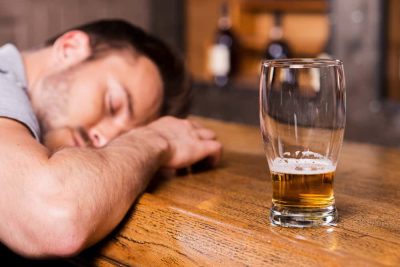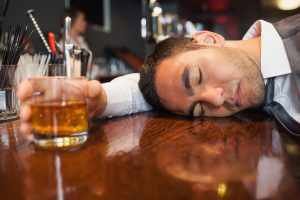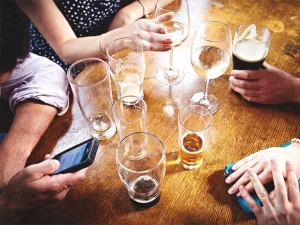Are you planning a night out with friends and wondering how much beer to get drunk? It’s a common question that many people have, but the answer isn’t always straightforward. It’s important to consider your weight, tolerance, and the alcohol content of the beer you’re drinking.
The amount of beer needed to get drunk can vary greatly depending on a number of factors, including your weight, tolerance, and the alcohol content of the beer. On average, it takes about 2-3 beers for a person weighing around 150 pounds to feel the effects of alcohol.
In this article, we’ll delve into these factors and provide some tips for determining the optimal amount of beer for you to get drunk. So whether you’re looking to have a good time with your friends or just want to know how much beer to buy for a party, this information will be helpful. Let’s dive in!
How much beer does it take to get drunk?
Determining how much beer it takes to get drunk can be difficult as it varies from person to person based on several factors. These factors include:
1. Weight: Generally, the more you weigh, the more beer you can consume before feeling the effects of alcohol. This is because alcohol is distributed throughout your body based on your weight, and the more body mass you have, the more alcohol you can handle.
2. Tolerance: Some people may have a higher tolerance to alcohol due to regular consumption or genetics. These individuals may be able to drink more beer before feeling drunk.
3. Alcohol content: The alcohol content of the beer you’re drinking will also affect how much you need to drink to feel drunk. Beers with a higher alcohol content will require less to achieve the same level of intoxication as beers with a lower alcohol content.
On average, it takes about 2-3 beers for a person weighing around 150 pounds to feel the effects of alcohol. However, this number can vary significantly based on the factors mentioned above. It’s important to remember that alcohol affects everyone differently, and it’s best to drink responsibly and in moderation.
If you’re unsure about how much beer you can handle, it’s always a good idea to start with just one or two and see how you feel before consuming more. Remember, it’s never safe to drink and drive, so always have a designated driver or use a rideshare service if you plan on drinking.
What is the average amount of beer needed to get drunk?
The average amount of beer needed to get drunk can vary greatly depending on several factors, including weight, tolerance, and the alcohol content of the beer. On average, it takes about 2-3 beers for a person weighing around 150 pounds to feel the effects of alcohol.
However, this number can increase or decrease based on the factors mentioned above. For example, someone who weighs more may be able to drink more before feeling drunk, while someone with a higher tolerance may be able to drink more without feeling the effects as quickly.
It’s important to remember that alcohol affects everyone differently, and it’s best to drink responsibly and in moderation. If you’re unsure about how much beer you can handle, it’s always a good idea to start with just one or two and see how you feel before consuming more.
How long does it take to get drunk on beer?
The length of time it takes to get drunk on a beer can vary greatly depending on several factors, including your weight, tolerance, and the alcohol content of the beer. On average, it takes about an hour for most people to feel the effects of alcohol after consuming one beer. However, this number can vary significantly based on the factors mentioned above.
Someone who weighs more or has a higher tolerance for alcohol may not feel the effects as quickly as someone who weighs less or has a lower tolerance. Additionally, the alcohol content of the beer can also affect how quickly you feel the effects.
In addition, beers with a higher alcohol content will typically cause you to feel drunk faster than beers with a lower alcohol content. It’s important to remember that alcohol affects everyone differently, and it’s best to drink responsibly and in moderation.
If you’re unsure about how much beer you can handle, it’s always a good idea to start with just one or two and see how you feel before consuming more.
Factors that affect how quickly you get drunk on beer
There are several factors that can affect how quickly you become drunk when drinking beer. These include:
1. The alcohol by volume (ABV) content of the beer: Beers with higher ABV will make you drunk more quickly than beers with lower ABV.
2. Age: As we get older, our bodies become less efficient at metabolizing alcohol, which means that it takes longer to break down the alcohol in our system. As a result, older people may become drunk more slowly than younger people.
3. Weight and height: People who weigh more will generally become drunk more slowly than people who weigh less. This is because there is more water in their bodies to dilute the alcohol. Height can also play a role, as taller people generally have more body water than shorter people.
4. Gender: Women generally become drunk more quickly than men because they have less water in their bodies to dilute the alcohol.
5. Alcohol tolerance: People who drink regularly may have a higher tolerance for alcohol and may not become drunk as quickly as people who do not drink regularly.
6. Empty stomach: Drinking on an empty stomach can make you drunk more quickly because there is no food in the stomach to slow down the absorption of alcohol into the bloodstream.
7. Medication: Some medications can interact with alcohol and affect how quickly you become drunk. It’s important to always read the label and follow the instructions on any medication you are taking.
8. Rate of consumption: Drinking beer quickly will make you drink more quickly than drinking it slowly.
9. Mood and lack of sleep: Being in a good mood and well-rested can help you tolerate alcohol better and become drunk more slowly. Conversely, being in a bad mood or lacking sleep can make you more sensitive to the effects of alcohol and make you drunk more quickly.
What are the risks of drinking too much beer?
Drinking too much beer can have serious health risks and can lead to a number of negative consequences. Some of the risks of excessive beer drinking include:
1. Alcohol poisoning: Drinking too much beer in a short period of time can lead to alcohol poisoning, which can be life-threatening. Symptoms of alcohol poisoning include vomiting, confusion, difficulty breathing, and loss of consciousness.
2. Hangovers: Drinking too much beer can lead to a hangover, which is a group of unpleasant symptoms that occur after drinking alcohol. Hangovers can cause headaches, nausea, fatigue, and muscle aches.
3. Increased risk of certain cancers: Excessive beer drinking has been linked to an increased risk of certain types of cancer, including breast, colon, and liver cancer.
4. Cardiovascular disease: Heavy beer drinking has been linked to an increased risk of heart disease, including high blood pressure and stroke.
5. Liver damage: Drinking too much beer can lead to liver damage, including fatty liver, alcoholic hepatitis, and cirrhosis.
6. Alcohol dependence: It is possible to become physically and mentally dependent on alcohol, including beer. This can lead to alcohol abuse and addiction, which can have serious negative consequences on your health and well-being.
It’s important to drink alcohol, including beer, in moderation and to never drink and drive. If you are concerned about your alcohol consumption or have a family history of alcohol abuse, it is a good idea to speak with a healthcare professional for advice.
Recommended:
How to calculate the number of beers to get drunk?
It is not safe or advisable to try to calculate the exact number of beers you need to drink to become drunk. The rate at which alcohol affects individuals can vary greatly based on a number of factors, including age, weight, gender, alcohol tolerance, and the presence of food in the stomach.
Drinking alcohol, including beer, can impair your judgment and coordination, which can increase the risk of accidents and injuries. It’s important to always drink responsibly and to never drink and drive.
If you do choose to drink beer, it is important to do so in moderation. The Centers for Disease Control and Prevention (CDC) defines moderate drinking as up to one drink per day for women and up to two drinks per day for men. It’s also a good idea to drink slowly and to eat food while drinking to help slow down the absorption of alcohol into the bloodstream.
How does alcohol tolerance affect how much beer I need to get drunk?
Alcohol tolerance is the body’s ability to metabolize and eliminate alcohol. People who drink regularly may have a higher tolerance for alcohol, which means that it takes them longer to become drunk, and they may be able to drink more before reaching a state of intoxication.
On the other hand, people who do not drink regularly may have a lower tolerance for alcohol and may become drunk more quickly after drinking less alcohol.
It’s important to note that alcohol tolerance can vary greatly from person to person and can be influenced by a number of factors, including age, weight, gender, and genetics.
Regardless of your alcohol tolerance, it is never safe to drink and drive. If you have consumed alcohol, it is important to arrange for a sober ride home or to stay where you are until you are sober. It’s also a good idea to drink in moderation and to never exceed the recommended daily limits for alcohol consumption, which are up to one drink per day for women and up to two drinks per day for men.
How can I drink responsibly and avoid getting too drunk?
There are a number of things you can do to drink responsibly and avoid getting too drunk:
Set limits: It’s a good idea to set limits for yourself before you start drinking. This can help you avoid drinking too much and becoming too drunk.
Drink slowly: Drinking alcohol, including beer, slowly can help you avoid getting too drunk. It’s a good idea to drink no more than one drink per hour.
Eat food: Eating food before or while drinking can help slow down the rate at which alcohol is absorbed into the bloodstream, which can help you avoid getting too drunk.
Stay hydrated: Drinking water or other non-alcoholic beverages between drinks can help you stay hydrated and can help you avoid getting too drunk.
Avoid mixing alcohol with other drugs: Mixing alcohol with other drugs, including prescription medications, can be dangerous and can increase the risk of negative consequences.
Don’t drink and drive: It is never safe to drink and drive. If you have consumed alcohol, it is important to arrange for a sober ride home or to stay where you are until you are sober.
Types of beers that can get someone drunk
Here is a list of some types of beer and their alcohol by volume (ABV) content:
Light lager: Many light lagers have an ABV of around 4-5%.
Pilsner: Pilsners typically have an ABV of around 4-6%.
Pale ale: Pale ales can have an ABV of around 4-6%.
India pale ale (IPA): IPAs can have an ABV of around 6-7%.
Wheat beer: Wheat beers can have an ABV of around 4-5%.
Stout: Stouts can have an ABV of around 4-8%.
Porter: Porters can have an ABV of around 4-7%.
Belgian-style ale: Belgian-style ales can have an ABV of around 6-10%.
Barleywine: Barleywines can have an ABV of around 8-12%.
Types of beers that can’t get one drunk
There are no types of beer that cannot potentially cause someone to become drunk if they drink enough of it. The rate at which someone becomes drunk when drinking beer can vary based on a number of factors, including their weight, gender, alcohol tolerance, and the presence of food in their stomach.
That being said, some beers have a lower alcohol by volume (ABV) content and may not lead to someone becoming as drunk as quickly as beers with higher ABV. For example, light lagers and wheat beers typically have an ABV of around 4-5%, which is lower than some other types of beer. However, it is still possible to become drunk by drinking enough of these beers.
Conclusion
If you do choose to drink beer, it is important to do so in moderation. Also, knowing how much beer to get drunk can also help to cut short your intake to avoid getting drunk.
The Centers for Disease Control and Prevention (CDC) defines moderate drinking as up to one drink per day for women and up to two drinks per day for men. It’s also a good idea to drink slowly and to eat food while drinking to help slow down the absorption of alcohol into the bloodstream.




